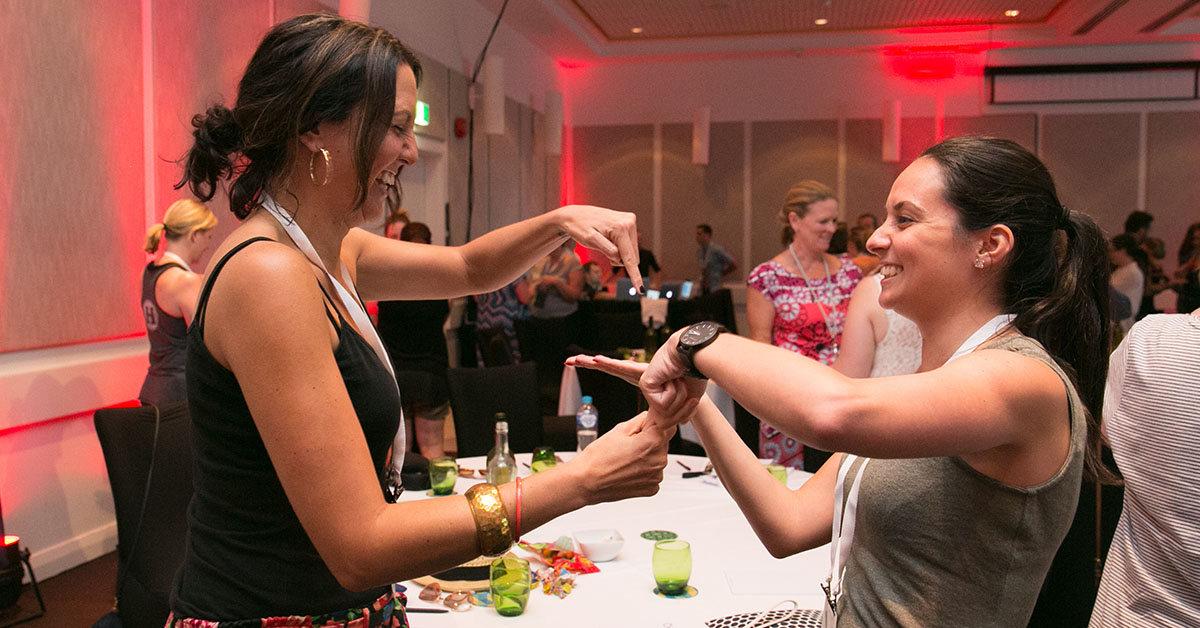Different Types of Team Building Activities
When considering different types of team building activities for your business or team, start with the end in mind and what outcomes you want to achieve.
Different team building activities are designed to achieve different outcomes – from simply having fun and helping teams to bond, to driving long-term behavioural change.
Regardless of the desired outcome, team building activities must be delivered in a safe, inclusive, and comfortable environment, and be geared towards helping individuals and teams better understand themselves and their colleagues.
Importantly, team building is about being collective and collaborative. It is not about the individual performance but rather about learning where you can add the most value to your team to receive the best outcome.
Team building is also about teaching individuals to be comfortable and self-assured around what they are good at and how they can contribute – knowing that sometimes they can be the hero and sometimes they cannot.
This way of thinking is a huge driver of stronger relationships and collaborative, high-performing teams.
The Spectrum of Team Building Activities:
At Be Challenged, we talk about the spectrum of team building activities, delivered on a scale from 1-10.
- 1-3: Surface-level (Fun): Laugh, connect, have fun, and drive team bonding.
- 4-7: Mid-level (Development): Understand personalities: self, and others.
- 8-10: Deep-level (Alignment and behavioural change): Unpack blockages, toxicity and drive alignment around work methods and common goals.
Broadly knowing what you are trying to achieve within this team building activity spectrum – and the priority of different outcomes – is an important starting point in determining suitable team building activities.
Other important considerations include group size, venue, weather, participant attitudes and budget.
The Facilitator is Everything:
The experience and talent of your team building activity facilitator will directly impact how well that activity is received by your team and delivers on your desired outcomes.
This is especially true for any mid-level or deep-level activities. While less experience is required to deliver surface-level team building activities, if you are seeking to unpack personalities, team dynamics, and drive behavioural change, your facilitator should have a background in human resources, be experienced in human behaviour and relationships, and qualified in personality assessment tools.
These qualifications will also help the facilitator help managers and team members understand their individual needs and why we behave the way we do.
Create a Long-term Team Building Plan:
While you can achieve great things in only a few hours of team building, you cannot solve everything in one activity.
Team building requires a vision of where you want to be as a team, a long-term plan of how you will get there, and knowing where you are right now – whether Storming, Forming or Norming.
Buy-in from team members is critical and asking for their feedback and involving them in the team building journey and planning process will help achieve this.
Conference Team Building Activities:
Team building activities at conferences tend to be focused on a handful of specific key outcomes:
- Engaging audiences with your message, vision, or strategy
- Turning conference audiences into conference participants
- Connecting conference audiences together
- Making your conference message memorable
Ensuring your conference team building activities are designed for delivering on these key outcomes is critical, as is the timing of delivery.
People often finish their conference with a team building activity, however it should be delivered at the start because it will help break down barriers and allowing people to feel more comfortable and open to sharing their ideas in workshops and breakout sessions.






